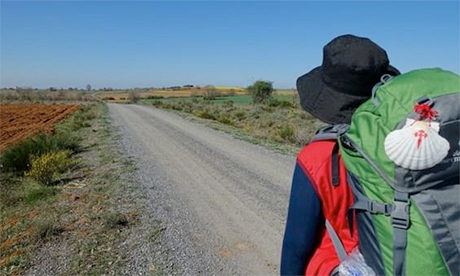The statistics about the number of people walking the Camino de Santiago de Compostela in 1986 point only to the sparseness of a forgotten trail.
A low pilgrim population in the 80s turned an ancient path into more of a medieval legend.
Rather than a well-known travel destination, the ancient ‘Way of St James’ was then little more than a dusty relic of Christian, and pagan, history.
However, 21 years later, statistics show that 301,036 pilgrims received their Compostela certificates in 2017.
The powerful resurgence in the popularity of pilgrimage, particularly of the Way of St James, is undeniable.
Is pilgrimage providing the perfect nourishment for the ritualistic needs of a spiritually hungry generation?
The concept of ‘going on pilgrimage’ has traditionally evoked many ideas: undertaking a journey to serve a personal purpose; giving expression to a difficult situation through bodily action, in the hope of securing an outcome; following in the footsteps of many who have walked the same path before; fulfilling a religious obligation.
Camino
The idea of pilgrimage has over time evolved to meet the expectations of a 21st century world and yet still, whether the hope is for healing, miracles, peace, or even weight loss, people choose to walk the gruelling 500 miles of the Camino, with the bare minimum of possessions, more than a thousand years after the first pilgrims.
There is little doubt that the Camino owes much of its newfound fame to the media.
Through Martin Sheen’s 2010 film, The Way and the well-read German book, Ich bin daan mal weg (‘I’m off then’), to the BBC’s recent celebrity challenge, Camino: The Road To Santiago, audiences around the world have discovered the charms of the pilgrimage and have flocked to immerse themselves in the wonders of the Camino.
The common threads of these pieces weave one theme: a focus on the inner life with the hope of some dramatic, irrevocable change by the end of the journey.
Biblical and anthropological insights could shed some light on why this might be.
The God of the Old Testament provided the people of Israel with ritual instruction, intending to show them how properly to praise their creator and provider.
Rituals were the intended outlet for the heart, reinforced with a physical action.
Fasting
One such example is fasting.
As Karen Eliasen describes: ‘Fasting as a ritual act is not merely a symbol or a metaphor for some other-worldly activity. It is an experience of concrete, this-worldly changes.’
Eliasen continues to say that these physical changes are part of a communication and dialogue between God and the people.
In a similar way, pilgrimage is a way of physically enacting and embodying a conversation with God.
It encompasses all manner of the human being: it is spatial, physical and it speaks to the inner emotional and spiritual dynamics of a person.
To provide an example of this in another cultural context, anthropologist Catherine Allerton studied the padong journeys undertaken by the brides of Manggarai of Eastern Indonesia, whereby brides would walk long distances from their kin towards their spouse’s family, wailing on the way as a fully embodied image of the journey the heart is also taking.
Such pilgrimage rituals witness to an important inner journey and to the importance of documenting emotions through physical manifestations.
However, it is the anthropological theory of ‘liminality’ developed by Victor Turner that might be the most important lens through which to study the contemporary allure of pilgrimage. Continue reading
- Emma Holland is Producer of Pray as you go. She walked the Camino in 2014.
- Image: Thinking Faith
